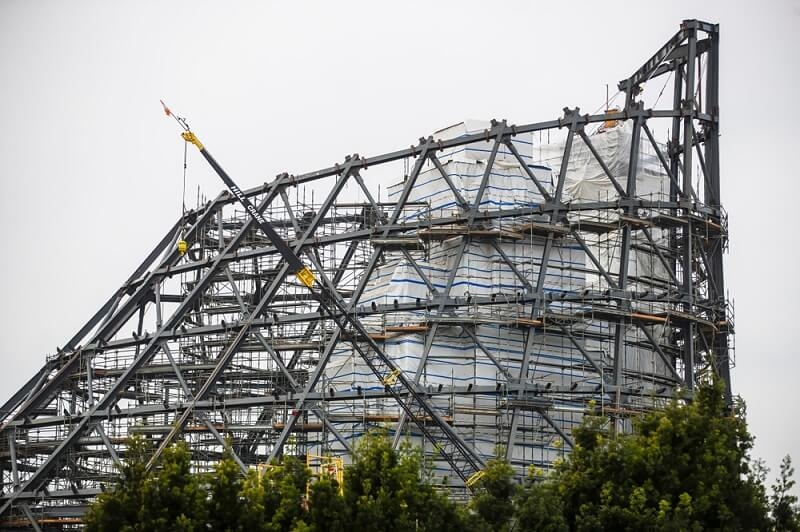
As urban populations grow and climate change exacerbates the intensity of natural disasters, the need for earthquake-resilient infrastructure has never been more urgent. Earthquakes are unpredictable and devastating, capable of collapsing buildings, damaging lifelines, and causing mass casualties. To ensure safer cities, communities must take proactive steps in infrastructure planning, embracing sustainable building techniques and cutting-edge seismic engineering strategies. Building earthquake-resilient infrastructure is not just about protection; it’s about resilience, recovery, and long-term disaster mitigation.
The term "earthquake-resilient infrastructure" refers to systems, buildings, and public facilities able to withstand seismic forces without collapsing or suffering significant damage. These systems are designed with various materials, designs, and technologies which absorb and dissipate energy during seismic events so that the building stays structurally sound and people retain safety.
Construction systems designed to be resilient to earthquakes fundamentally differ from conventional systems as they do not depend on rigidity, but rather swelling and endurance during stress. Base-isolated buildings may be shock-absorbing bridges; these structures, which have been part of modern seismic engineering, are now all designed to stretch-and-flex without breaking.

Harmonic environmental architecture and earthquake-resilient construction are synonymous; they complete each other. Most of the time, environmentally friendly materials and techniques have an "extra" robustness at the instance of disasters-for instance:
One may create buildings with any or all of the earth-quake-resistant features and still invite sustainability into the design principles at this stage, so one is assured that the structure is safe, sustainable in design, and hence cost-effective over the years.
In my opinion, one of the best forms of infrastructural planning at the community level is the creation of a risk-resilient society. This includes exposing local seismic risks, mapping the fault lines that can rupture, and prioritizing areas under threat. Main community actions can include:
Communities understand their exposure to seismic hazards through geological surveys and modeling. Identifying high-risk zones for more planning can be done with the help of Geographic Information Systems (GIS) visualization tools.
Construction should be prohibited in highly hazardous areas such as fault zones, liquefaction-prone regions, or steep slopes, as included in the zoning regulations by local authorities. Zoning stipulates height, density, or distance from one another for buildings.
Old buildings are usually the most vulnerable. Retrofitting means coming up with strengthening foundations, putting steel reinforcements, or applying carbon fiber wraps to enhance a building's performance during seismic activity. They can set up some incentive program in support of home and small business owners upgrading their properties.
The most useful structures during and shortly following a disaster are hospitals, schools, and fire stations, as well as bridges. These structures obtain the most attention. In fact, the disaster management capacity of such structures depends significantly on their high seismic engineering standards.
You may like: Unearthing Earth’s Secrets Through the Science of Seismology
For seismic engineering is attached as brain to the body of any earth-fault-resistant infrastructure. It involves the arrangements of structures resistant to these seismic forces by deploying materials, construction techniques, and technologies that absorb energy and minimize damage.
Some of the innovations are as follows:
Training engineers, architects, and construction workers in seismic principles ensures that these technologies are applied properly and efficiently in practice.
Policy frameworks and governance structures shape the ability of societies to prepare for earthquakes. Both these have ensured that not just lives, but revenue losses have also been mitigated to the least. What any level of government ought to do includes:
Urban design directly affects a community's ability to survive against and quickly recover from earthquakes. Safer cities are designed for urban areas that reduce risk while improving the residents' well-being and mobility. Some design methods include:
These planning techniques help serve both the day-to-day functioning and emergency resilience.
To many people, the success of resilient infrastructure depends on a strong community-based engagement process. Communities must be educated about:
Workshops and training could be held by schools, local governments, and nonprofit organizations to enhance public engagement.
Essential Reading: How to Create an Emergency Earthquake Kit: A Complete Guide
One of the most earthquake-prone cities in the world, Tokyo has made massive investments in earthquake-resilient infrastructure. Skyscrapers are built using advanced seismic engineering techniques, mass dampers, and base isolation. The city also conducts annual drills involving millions of residents and emergency personnel.
New Construction Already has Seismic Resilience Since the building codes in San Francisco are among the Strictest in the United States. The city also makes financial provision for renovating old buildings, and to disaster mitigation education to residents.
The Reconstructed City after the Destructive Earthquake of 2011 was Committed to Resilience and Sustainable Construction. Among other things, the city developed flexible structures and community hubs connected by green space hallmark of cities designed for natural disasters, and centers for emergency response.
Infrastructure built to withstand an earthquake incorporates smart technologies as well as sustainable innovations. Artificial intelligence, machine learning, and big data analytics could evolve further, giving all new ways of predicting and responding to seismic events. For example:
The accumulation of these advances will be integrated along with infrastructure planning toward creating more adaptive, responsive and resilient urban environments.
Earthquakes cannot be prevented, but devastation can be averted. With earthquake-resistant infrastructure, sustainable building practices, advanced seismic engineering, and holistic infrastructure engagement, communities drastically reduce the damage to human life and economic costs incurred during seismic disasters. Forward, onward-the clear goal now is to make cities that are safe against the shocks of the earth but also lively in their aftermath. Resilience is no longer an option; it is the foundation of our future.
This content was created by AI